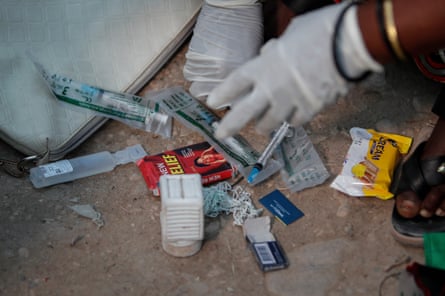The percentage of girls and women who have experienced female genital mutilation (FGM) has risen by 15% in the last eight years, according to recently collected data.
Unicef, the UN’s children’s agency, recently shared data indicating that over 230 million females currently living have experienced female genital mutilation (FGM), a significant increase from the 200 million reported in 2016. Unicef executive director Catherine Russell noted a concerning trend of girls being subjected to FGM at a younger age.
“Female genital mutilation harms girls’ bodies, dims their futures, and endangers their lives,” she said. “We’re also seeing a worrying trend that more girls are subjected to the practice at younger ages, many before their fifth birthday. That further reduces the window to intervene. We need to strengthen the efforts of ending this harmful practice.”
According to Unicef, in order to eradicate this practice by the UN’s set deadline of 2030, the efforts would need to increase 27 times their current pace. Although FGM is not increasing worldwide, the number of girls born in countries where it is practiced remains higher than in non-practicing countries.
Female genital mutilation (FGM) is the cutting or removal of all or part of the female genitalia, which is considered a violation of human rights. In 2012, the United Nations passed a resolution to outlaw this practice.
The majority of FGM incidents, or about 60%, occur in Africa with a total of 144 million cases. This is followed by approximately 80 million cases in Asia and 6 million cases in the Middle East.
According to Unicef, the countries with the greatest prevalence rates are Somalia, Guinea, Djibouti, Egypt, Sudan, and Mali. These nations are also facing pressing challenges like conflict, climate-related disasters, and food insecurity, which pose obstacles to providing aid and programs for girls.
Over the past few decades, several African nations have seen a gradual decrease in the implementation of the practice, although there has been a plateau or even regression in overall advancements.
A bill was introduced in parliament in The Gambia this week to lift the ban on FGM, sparking a heated discussion on the topics of rights, religion, and culture. While there is increasing demand for its criminalization, FGM is still legal in Sierra Leone. Tragically, three girls lost their lives during cutting ceremonies in the country earlier this year.
Claudia Cappa, the Unicef report’s lead author, said: “Where the practice is concentrated, the majority of women and men are saying that they want the practice to stop … but this growing opposition is not matched with a change in [behaviour].”

Display the image in full screen.
In 2011, Kenya made the practice of FGM illegal and has since seen a gradual decrease in its occurrence. However, advocates are still worried about the extent of progress.
The Somali population in the north-eastern region of Kenya is facing severe impacts from the climate crisis. Unfortunately, efforts to enforce bans on female genital mutilation (FGM) are not effective and advancements in eradicating this harmful practice have slowed down. In the central Kenya region of Murang’a, there have been reports of a resurgence in FGM, particularly among women over 30 who are choosing to undergo the procedure as a way to reconnect with their cultural traditions.
Activists argue that the medicalization of the practice, whereby it is performed by healthcare professionals instead of traditional cutters in hospitals or homes, makes it more difficult to identify.
Esnahs Nyaramba, a campaigner against Female Genital Mutilation (FGM) from the Kisii region, located in western Kenya, has noticed a decrease in the number of distress calls she receives compared to ten years ago. She used to rely on information from community members to inform local authorities and stop ongoing FGM procedures, but such reports are now less frequent due to the abandonment of public ceremonies, even though the practice itself continues.
Nyaramba stated that in Kisii, it is challenging to determine the pattern accurately because in current times, only the mother and the individual performing the circumcision are aware when a child is circumcised.
On Friday, Unicef reported data on FGM and noted an increase in families choosing to have their daughters undergo the procedure at a younger age, as young as two years old, in order to minimize physical and emotional harm. The agency stated that this is a concerning trend that requires attention.
Cappa stated that the window of opportunity to prevent the situation has decreased and therefore more significant measures must be taken.
Nimco Ali, CEO of the Five Foundation, a worldwide coalition against FGM, stated that local groups working to eradicate the practice require increased financial support.
Ali, a survivor of FGM, is well aware of the severe repercussions it has on women and girls. Upon hearing the new estimate of a significant increase of 30 million more affected individuals, Ali expressed both shock and personal devastation. She believes that prevention methods are effective and it is disheartening to see the preventable consequences.
Source: theguardian.com


